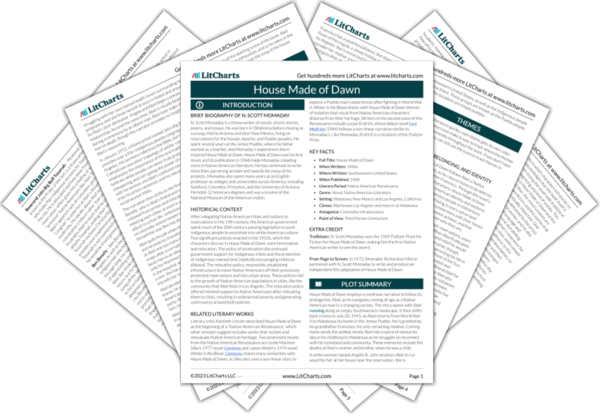The narration remains distanced from Abel and the albino man, never allowing the reader to know what they discuss. This distance remains when Abel kills the albino man; the narration describes the action without explaining Abel’s internal monologue or his motivation for the murder. Abel kills the man between the river and the highway, a symbolic halfway point between the realms of the modern and the traditional. Abel has been languishing in this unresolved intermediate space since he came back from the war, and his turmoil has culminated in violence. As the albino man dies, he sees a “black infinity” that resembles the “nothing in the absolute” that Angela believes will bring inner peace.
